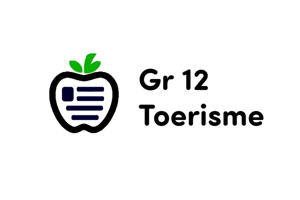Podcast
Questions and Answers
Which of the following is NOT a characteristic of services?
Which of the following is NOT a characteristic of services?
- Heterogeneity
- Perishability
- Standardization (correct)
- Intangibility
A customer's experience with a service is considered a(n) ______ quality.
A customer's experience with a service is considered a(n) ______ quality.
- Credence
- Experience (correct)
- Search
- Tangible
What is the term used for the benefit received from using a product or service?
What is the term used for the benefit received from using a product or service?
- Customer service
- Derived service (correct)
- Service industry
- Tangible good
Which of these is an example of a service industry?
Which of these is an example of a service industry?
How does technology enhance the service experience?
How does technology enhance the service experience?
Which of the following is NOT a factor in the services marketing mix?
Which of the following is NOT a factor in the services marketing mix?
What is the main implication of the simultaneous production and consumption characteristic of services?
What is the main implication of the simultaneous production and consumption characteristic of services?
What is the primary benefit of a strong focus on customer service?
What is the primary benefit of a strong focus on customer service?
Which of these actions can be considered a part of service recovery?
Which of these actions can be considered a part of service recovery?
What is the difference between physical evidence and servicescape?
What is the difference between physical evidence and servicescape?
How does technology impact the service performance gap (Gap 3)?
How does technology impact the service performance gap (Gap 3)?
What is the primary difference between relationship marketing and transactional marketing?
What is the primary difference between relationship marketing and transactional marketing?
What is the 'Amazon Effect' in terms of customer expectations?
What is the 'Amazon Effect' in terms of customer expectations?
What are the primary factors influencing the adequate service level?
What are the primary factors influencing the adequate service level?
What is the 'Zone of Tolerance' in customer expectations?
What is the 'Zone of Tolerance' in customer expectations?
How does culture influence customer expectations of service?
How does culture influence customer expectations of service?
What are the key determinants of customer satisfaction?
What are the key determinants of customer satisfaction?
What is the primary difference between interactive marketing and external marketing?
What is the primary difference between interactive marketing and external marketing?
What is the importance of service encounters in customer perception?
What is the importance of service encounters in customer perception?
What is the first step in designing service marketing research?
What is the first step in designing service marketing research?
What are the common research objectives in service marketing?
What are the common research objectives in service marketing?
What are the key advantages of qualitative research in service marketing?
What are the key advantages of qualitative research in service marketing?
What are the key considerations when determining the costs of service marketing research?
What are the key considerations when determining the costs of service marketing research?
What are the different types of service marketing research, and how are they valuable?
What are the different types of service marketing research, and how are they valuable?
Flashcards
Service Industries
Service Industries
Businesses that primarily provide services, like hospitality and healthcare.
Intangibility
Intangibility
Services cannot be touched or stored, unlike physical goods.
Simultaneous Production and Consumption
Simultaneous Production and Consumption
Services are produced and consumed at the same time, e.g., live events.
Perishability
Perishability
Signup and view all the flashcards
Experience Qualities
Experience Qualities
Signup and view all the flashcards
Credence Qualities
Credence Qualities
Signup and view all the flashcards
Derived Service
Derived Service
Signup and view all the flashcards
Three New P’s of Services Marketing Mix
Three New P’s of Services Marketing Mix
Signup and view all the flashcards
Physical Evidence
Physical Evidence
Signup and view all the flashcards
Customer Gap
Customer Gap
Signup and view all the flashcards
Gap 1: Listening Gap
Gap 1: Listening Gap
Signup and view all the flashcards
Gap 2: Service Design Gap
Gap 2: Service Design Gap
Signup and view all the flashcards
Gap 3: Performance Gap
Gap 3: Performance Gap
Signup and view all the flashcards
Gap 4: Communication Gap
Gap 4: Communication Gap
Signup and view all the flashcards
Relationship Marketing
Relationship Marketing
Signup and view all the flashcards
Service Recovery
Service Recovery
Signup and view all the flashcards
Physical Evidence vs. Servicescape
Physical Evidence vs. Servicescape
Signup and view all the flashcards
Technology's Impact on Gaps
Technology's Impact on Gaps
Signup and view all the flashcards
Zone of Tolerance
Zone of Tolerance
Signup and view all the flashcards
Adequate Service
Adequate Service
Signup and view all the flashcards
Determinants of Customer Satisfaction
Determinants of Customer Satisfaction
Signup and view all the flashcards
Qualitative vs. Quantitative Research
Qualitative vs. Quantitative Research
Signup and view all the flashcards
Study Notes
Introduction to Services
- Service industries focus on providing services rather than tangible goods (e.g., hospitality, healthcare, finance).
- Services, like airline travel and consulting, are also products offered for sale.
- Customer service enhances the customer experience before, during, and after purchase.
- Derived services are the benefits received from using a product or service, like relaxation from a spa.
- The tangibility spectrum ranges from pure goods to pure services.
- Service-based economies derive a significant portion of their GDP from service industries.
- Quality service leads to customer satisfaction, loyalty, and positive word-of-mouth, increasing profitability.
- Services are intangible, heterogeneous, consumed simultaneously with production, and perishable.
- This necessitates unique marketing strategies to manage expectations, train personnel, and maintain quality.
- Services are categorized by qualities (search, experience, credence) affecting evaluation methods.
- The services marketing mix includes people, physical evidence, and process, beyond the traditional 4Ps.
- Technology enhances service efficiency, personalization, and accessibility through tools like chatbots and self-service kiosks.
The Gaps Model of Service Quality
- The customer gap represents the difference between customer expectations and perceptions.
- Provider gaps encompass:
- Gap 1 (Listening Gap): Failure to understand customer expectations due to insufficient research or communication.
- Gap 2 (Service Design and Standards Gap): Mismatched service quality specifications and customer expectations.
- Gap 3 (Service Performance Gap): Employees failing to deliver service as designed.
- Gap 4 (Communication Gap): Discrepancy between promised service (in marketing) and actual service.
- Relationship marketing prioritizes long-term customer engagement over one-time sales.
- Service recovery aims to resolve service failures and restore customer satisfaction.
- Physical evidence includes all tangible elements of service, while the servicescape specifically refers to the physical service delivery environment.
- Technology impacts all provider gaps positively by improving data collection, automating processes, and enhancing interactions.
- Interactive marketing happens during customer encounters (employee interaction), while external marketing involves advertising.
Customer Expectations of Service
- Technology and competition increase customer expectations for convenience and personalization.
- The "Amazon Effect" illustrates rapid, seamless, and personalized service expectations.
- Customer expectations include desired service (hoped-for level) and adequate service (minimum acceptable).
- Culture shapes service expectations and perceptions.
- The zone of tolerance encompasses the range between desired and adequate service, varying by customer and situation.
- Factors influencing desired service encompass past experiences, needs, and word of mouth.
- Factors influencing adequate service include temporary situational factors and perceptions of service performance.
- Predicted and desired service expectations derive from past experiences, personal needs, and implicit/explicit promises.
- Customer expectations of robots focus on efficiency, personalization, and reliability.
Customer Perceptions of Service
- Service quality assesses service performance, while customer satisfaction reflects overall fulfillment.
- Perceptions encompass both transaction-specific and cumulative experiences.
- Customer satisfaction factors include reliability, responsiveness, assurance, empathy, and tangibles.
- Culture affects service quality evaluations due to cultural norms.
- The American Customer Satisfaction Index (ACSI) measures national service satisfaction levels.
- Outcomes of customer satisfaction include loyalty, positive word-of-mouth, and repeat business.
- Service quality dimensions include reliability, responsiveness, assurance, empathy, and tangibles.
- E-service quality dimensions include efficiency, privacy, fulfillment, and responsiveness.
- Service encounters are crucial customer interaction points.
- Sources of (dis)pleasure can stem from employee behavior, service failures, and resolution processes.
Listening to Customers Through Research
- Touchpoints and customer journeys involve individual interactions and the entire experience process.
- Service research programs involve ongoing efforts for collecting customer insights.
- Research objectives focus on understanding customer needs, performance, and improvement areas.
- Research encompasses both qualitative (in-depth insights) and quantitative (numerical data) methods.
- Factors to consider include costs versus benefits when determining research strategies.
- Research measures encompass customer satisfaction, loyalty, and service quality evaluations.
- Research types include surveys, focus groups, mystery shopping, and observations, each with unique advantages and disadvantages.
- Data representation includes charts, heat maps, and trend analyses to present insights.
- Upward communication and feedback mechanisms promote service delivery improvements.
Studying That Suits You
Use AI to generate personalized quizzes and flashcards to suit your learning preferences.




